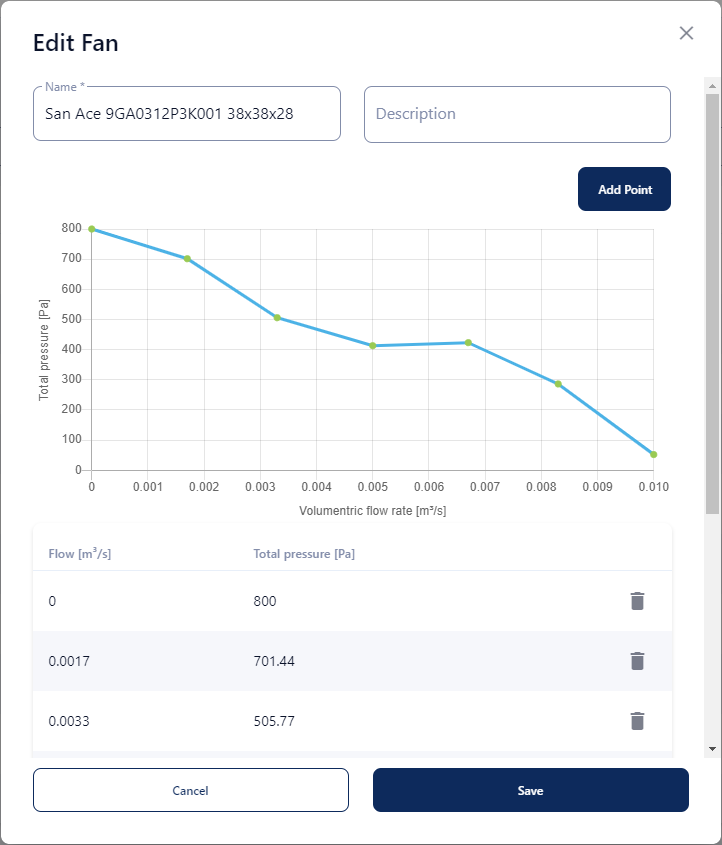How to manage fans and pumps
Introduction
Fans and pumps are common types of components used in cooling systems. Although they serve different purposes, they share similar properties. The following parameters are the most important to define them correctly in a simulation:
| Property | Component type | ||
|---|---|---|---|
| Name | Unit | Fan | Pump |
| Flow | | ||
| Total pressure | | ||
| Speed | | ||
| Performance curve: Total pressure in terms of volumetric flow rate |
, | ||
Fan and pump parameters
The flow quantifies the volume of fluid that passes through the boundary per unit of time. It is often expressed in cubic feet per minute , or in cubic meters per second in the SI. ColdStream expects SI units as input when defining your own fan or pump.
Pressure is a key physical quantity used in fluid dynamics. Any fluid has a static pressure defined by thermodynamics laws. Moreover, if the fluid is in motion, it also exerts a dynamic pressure that is proportional to the square of its velocity. The SI unit of pressure is the Pascal but it is also often expressed in inches of water .
The pressure in a pump is expressed with a measure of distance called the head . The head is the maximum height that a fluid can reach when the pump acts against gravity. It can be related to an actual pressure with the following relation .
ColdStream expects SI units as input when defining your fan or pump. If a performance curve with static pressures is given, you can easily convert it to total pressure if you know the dimensions of the fan or pump:
Where is the fan or pump area in and is the flow rate in .
This parameter is only related to fans. The speed of the fan is a measure of how many complete rotations are accomplished within a given amount of time. Therefore it is usually expressed in revolutions per minute (rpm).
Performance curve
The most relevant data for describing the efficiency of a fan or a pump is its performance curve. This curve describes the negative correlation that exists between the pressure in the fluid and its flow. The total pressure acts indeed against the flow and the curve therefore usually starts with a maximum at . On the other hand, if the static pressure goes down to 0, the flow will reach its maximum value. A nominal value for both is also often provided and describes the point of the curve that maximizes the efficiency of the material.
How to define a performance curve?
It is very straightforward to enter a performance curve in the platform. You can define the performance curve by entering an amount of points that lie on the curve. You just click on the "add point" button and enter the appropriate total pressure in with the related volumetric flow rate in

Updated about 1 month ago
